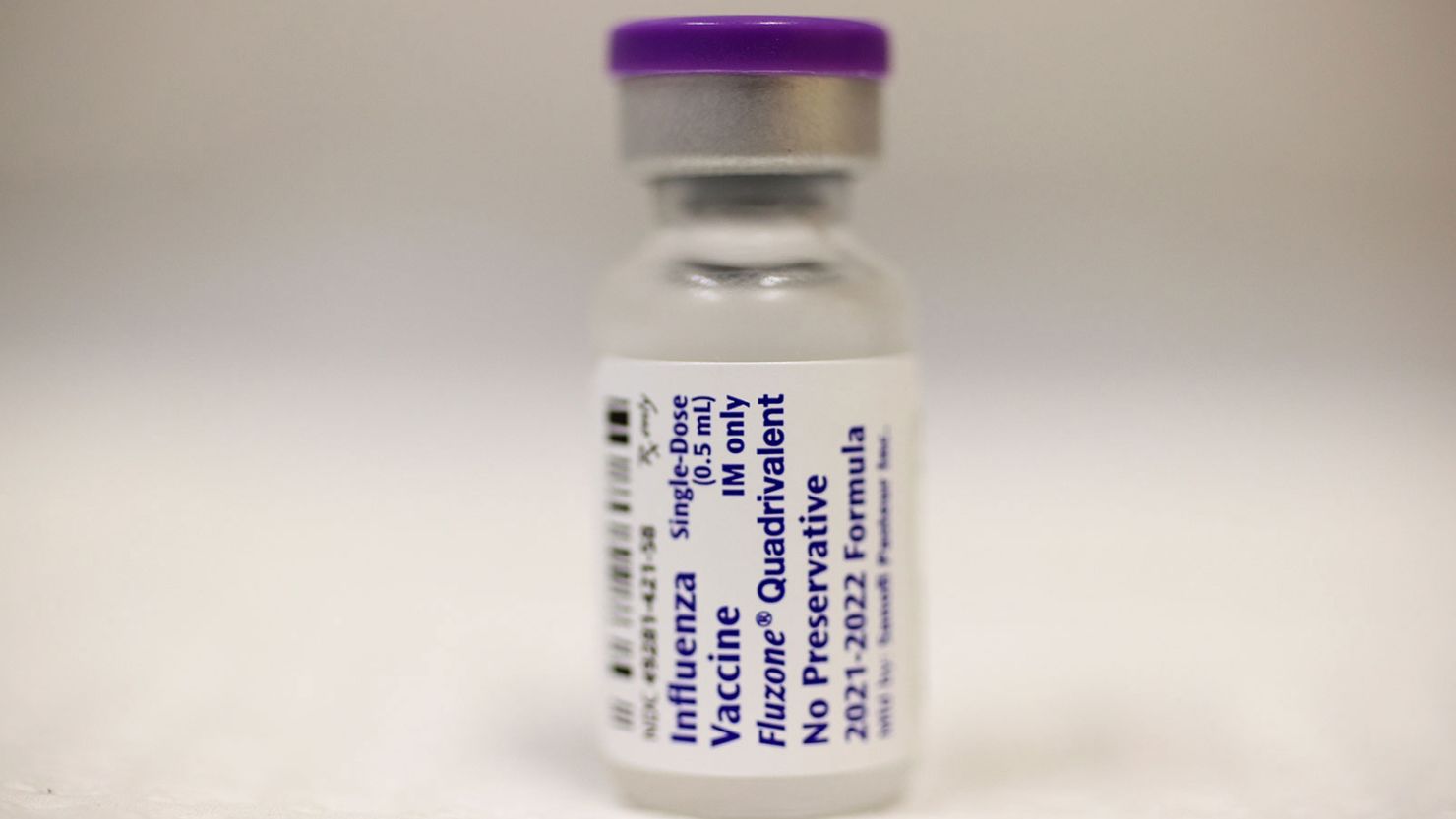For 10 years, Americans have had access to flu shots that protect against four strains of the virus: two A strains and two B strains.
Starting this fall, however, all the flu shots distributed in the United States will contain only three strains, and the change happened in part because of Covid-19.
On Tuesday, a panel of experts who advise the US Food and Drug Administration on vaccines voted unanimously to recommend three-strain flu vaccines that will exclude any viruses from B strains that are part of branch of the flu’s family tree called Yamagata.
Yamagata viruses were in decline before the pandemic, and all the precautions that helped people avoid Covid-19 – including masking, staying at home and better ventilation – appear to have finished them off. They haven’t been detected in testing since March 2020.
One Yamagata strain was typically included in each year’s flu shot recipe, so vaccine designers faced a quandary this year: Should they drop the strain from the formula or keep it in, since B-viruses are known to be cagey?
In the 1990s, when Yamagata was in its heyday, another branch of B-strain flu viruses called Victoria was seen only sporadically in testing, but it had a resurgence in the 2000s. What if Yamagata came back after a lengthy absence? It’s not quick or easy to change how flu vaccines are manufactured, and those changes require regulatory review and approval.
In September, the World Health Organization said that “inclusion of the Yamagata-lineage antigens in influenza vaccines is no longer warranted,” and in October, the FDA’s vaccine experts also said the Yamagata strains should be dropped as quickly as possible.
“We’ve been talking about this for four years,” said Dr.
Paul Offit, director of the Vaccine Education Center at Children’s Hospital of Philadelphia and a member of the FDA’s Vaccines and Biological Products Advisory Committee, or VRBPAC.
The change is happening faster than expected, said Dr. Arnold Monto, another VRBPAC member. He noted that in October, when the committee first voted to recommend removing Yamagata from flu vaccines, they were told that it might be impossible to exclude it next season because of regulatory red tape.
Dr. Jerry Weir, director of the FDA’s Division of Viral Products, said Tuesday that the agency has been working with manufacturers to get the Yamagata strain out of US vaccines in time for the 2024-25 flu season.
“At this point in time, each of the US influenza vaccine manufacturers have submitted updated regulatory files related to a trivalent influenza vaccine, and approval of all the necessary regulatory submissions is on track for 2024-25” season, he said during the advisory committee’s meeting.
In fact, Weir noted, the US was able to move faster than some other countries because all the vaccine manufacturers already had approvals for trivalent flu vaccines here. It’s taking longer in other parts of the world to make the switch.
For that reason, the committee also voted to recommend a four-strain formula – including one from B/Yamagata – for vaccines that will be manufactured in the US but distributed in other countries.
“And I think we should congratulate both FDA and the manufacturers of making this possible, because the problem seems to be totally logistic,” Weir said.
There are good reasons for dropping the Yamagata strain, Offit said.
“You don’t want to be vaccinating people for something they don’t need,” he said.
There may also be some harms in continuing to include it, said Dr. Jodie Guest, senior vice chair of the Department of Epidemiology at Emory University’s Rollins School of Public Health, who is not a member of the FDA committee.
“Anytime these flu vaccines are being produced, they are – depending on which vaccines you are talking about – using live or attenuated virus, and you do have to grow it,” she said. Growing something in a lab also means it could escape from that lab.
“So while it would be an anticipated, incredibly small risk, there is the possibility you could reintroduce it into the population by having it contained in a vaccine,” Guest said.
Get CNN Health's weekly newsletter
Sign up here to get The Results Are In with Dr. Sanjay Gupta every Tuesday from the CNN Health team.
Other researchers have pointed out that dropping the Yamagata strain would free up production capacity to increase the number of doses made globally, something that would benefit countries affected by shortages.
In an article on the expected changes published February 28 in the New England Journal of Medicine, Monto, Weir and Dr. Maria Zambon from the UK Health Security Agency said the move opens the door to considering new vaccine formulas.
Since the shot’s B/Victoria and A/H1N1 strains are often more effective than the A/H3N2 component, some experts have suggested doubling the dose of H3N2 or perhaps slipping in a second member of that family.
But as the authors note, any such change would require testing and regulatory approval, and for that reason, it’s not likely we’ll see the return of four-strain flu shots very quickly. Instead, they say, it will be “more of a long-term goal for improving vaccine effectiveness.”
In the meantime, scientists will keep testing flu viruses, just to make sure Yamagata really has been relegated to the history books.

